Intro
The appendix, a small, tube-like structure attached to the large intestine, has long been a subject of interest in the medical community. While its function is not entirely understood, it is believed to play a role in the early development of the gut microbiome. However, when the appendix becomes inflamed or infected, it can cause severe abdominal pain, nausea, and vomiting, leading to a potentially life-threatening condition known as appendicitis. In such cases, surgical removal of the appendix, also known as an appendectomy, is often the only effective treatment option.
Appendicitis is a common condition that affects millions of people worldwide every year. It can occur at any age, but it is most prevalent among young adults and teenagers. The exact cause of appendicitis is not fully understood, but it is thought to be related to a blockage of the appendix, which can be caused by a variety of factors, including a buildup of fecal matter, inflammation, or infection. If left untreated, appendicitis can lead to serious complications, such as perforation of the appendix, peritonitis, and even death.
The symptoms of appendicitis can vary from person to person, but they often include severe abdominal pain, nausea, vomiting, fever, and loss of appetite. In some cases, the pain may be accompanied by tenderness in the lower right abdomen, which can be tender to the touch. If you or someone you know is experiencing these symptoms, it is essential to seek medical attention immediately. A prompt diagnosis and treatment can help prevent complications and improve outcomes.
Understanding Appendectomy
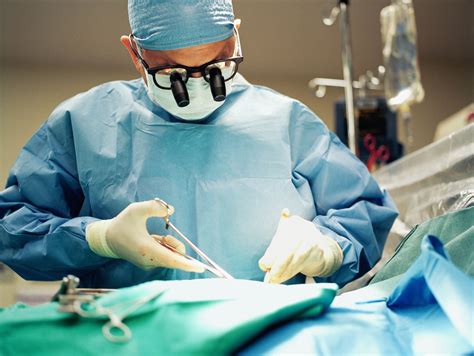
An appendectomy is a surgical procedure that involves the removal of the appendix. It is usually performed as an emergency procedure to treat appendicitis. There are two types of appendectomy: open appendectomy and laparoscopic appendectomy. Open appendectomy involves making a single incision in the lower right abdomen to access the appendix, while laparoscopic appendectomy involves making several small incisions to insert a laparoscope and other surgical instruments. Laparoscopic appendectomy is a minimally invasive procedure that offers several benefits, including smaller incisions, less pain, and a faster recovery time.
Benefits of Laparoscopic Appendectomy
The benefits of laparoscopic appendectomy include: * Smaller incisions, resulting in less tissue damage and scarring * Less pain and discomfort after surgery * Faster recovery time, with most patients able to return to normal activities within a few days * Lower risk of complications, such as wound infections and adhesions * Improved cosmetic results, with smaller scars that are less noticeablePreparation for Appendectomy
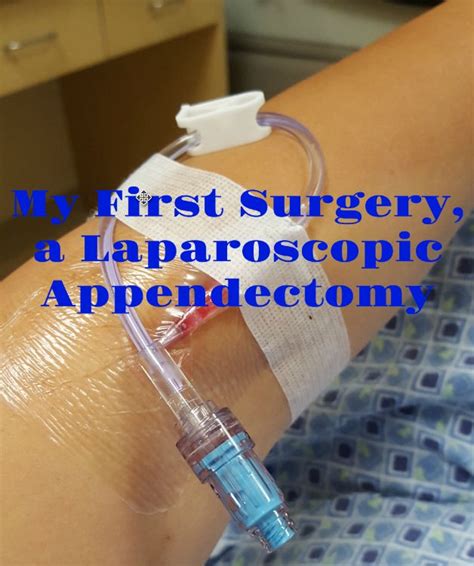
Before undergoing an appendectomy, you will need to undergo a series of tests and preparations to ensure that you are ready for surgery. These may include:
- Blood tests to check for signs of infection or inflammation
- Imaging tests, such as a CT scan or ultrasound, to confirm the diagnosis of appendicitis
- Bowel preparation to clean out the intestines and reduce the risk of complications during surgery
- Fasting and avoiding certain medications, such as blood thinners, to reduce the risk of bleeding during surgery
Risks and Complications of Appendectomy
While appendectomy is a common and generally safe procedure, there are some risks and complications that you should be aware of. These may include: * Bleeding or hemorrhage during or after surgery * Infection, either at the site of the incision or in the abdomen * Adhesions, or scar tissue, that can form in the abdomen and cause bowel obstruction * Injury to surrounding organs, such as the intestines or bladder * Reaction to anesthesia, which can cause respiratory or cardiac problemsRecovery After Appendectomy
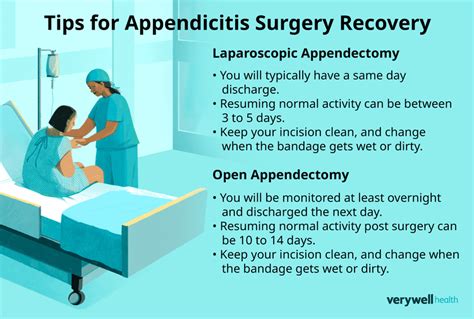
After undergoing an appendectomy, you will need to follow a series of instructions to ensure a smooth and safe recovery. These may include:
- Resting and avoiding strenuous activities, such as heavy lifting or bending, for several weeks
- Taking pain medication as directed to manage discomfort and pain
- Following a liquid diet and gradually introducing solid foods as tolerated
- Avoiding certain medications, such as blood thinners, to reduce the risk of bleeding
- Attending follow-up appointments with your surgeon to monitor your progress and remove any sutures or staples
Returning to Normal Activities
The time it takes to return to normal activities after an appendectomy can vary depending on the individual and the type of surgery performed. In general, most people can expect to: * Return to work or school within 1-2 weeks * Resume light activities, such as walking or stretching, within 1-2 weeks * Gradually increase their level of activity over the next several weeks * Avoid heavy lifting, bending, or strenuous activities for 4-6 weeksLong-Term Outlook After Appendectomy
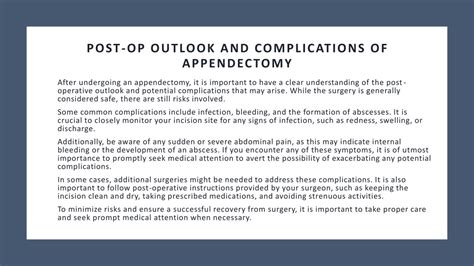
The long-term outlook after an appendectomy is generally excellent. Most people can expect to make a full recovery and return to their normal activities without any long-term complications. However, it is essential to follow your surgeon's instructions and attend follow-up appointments to ensure that you are healing properly.
Preventing Future Episodes of Appendicitis
While it is not possible to prevent appendicitis entirely, there are some steps you can take to reduce your risk of developing the condition. These may include: * Eating a high-fiber diet to help prevent constipation and reduce the risk of appendicitis * Avoiding certain foods, such as seeds or nuts, that can increase the risk of appendicitis * Staying hydrated and avoiding dehydration, which can increase the risk of appendicitis * Managing stress and avoiding certain medications, such as steroids, that can increase the risk of appendicitisConclusion and Next Steps
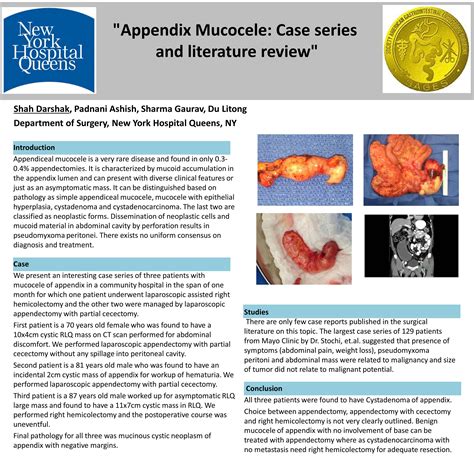
In conclusion, an appendectomy is a common and generally safe procedure that is used to treat appendicitis. While there are some risks and complications associated with the procedure, the benefits of an appendectomy far outweigh the risks. By following your surgeon's instructions and attending follow-up appointments, you can ensure a smooth and safe recovery. If you have any questions or concerns about appendectomy or appendicitis, be sure to speak with your healthcare provider.
We invite you to share your thoughts and experiences with appendectomy and appendicitis in the comments section below. Your feedback and insights can help others who may be going through a similar experience.
What is the main cause of appendicitis?
+The main cause of appendicitis is not fully understood, but it is thought to be related to a blockage of the appendix, which can be caused by a variety of factors, including a buildup of fecal matter, inflammation, or infection.
What are the symptoms of appendicitis?
+The symptoms of appendicitis can vary from person to person, but they often include severe abdominal pain, nausea, vomiting, fever, and loss of appetite.
What is the difference between open and laparoscopic appendectomy?
+Open appendectomy involves making a single incision in the lower right abdomen to access the appendix, while laparoscopic appendectomy involves making several small incisions to insert a laparoscope and other surgical instruments.
